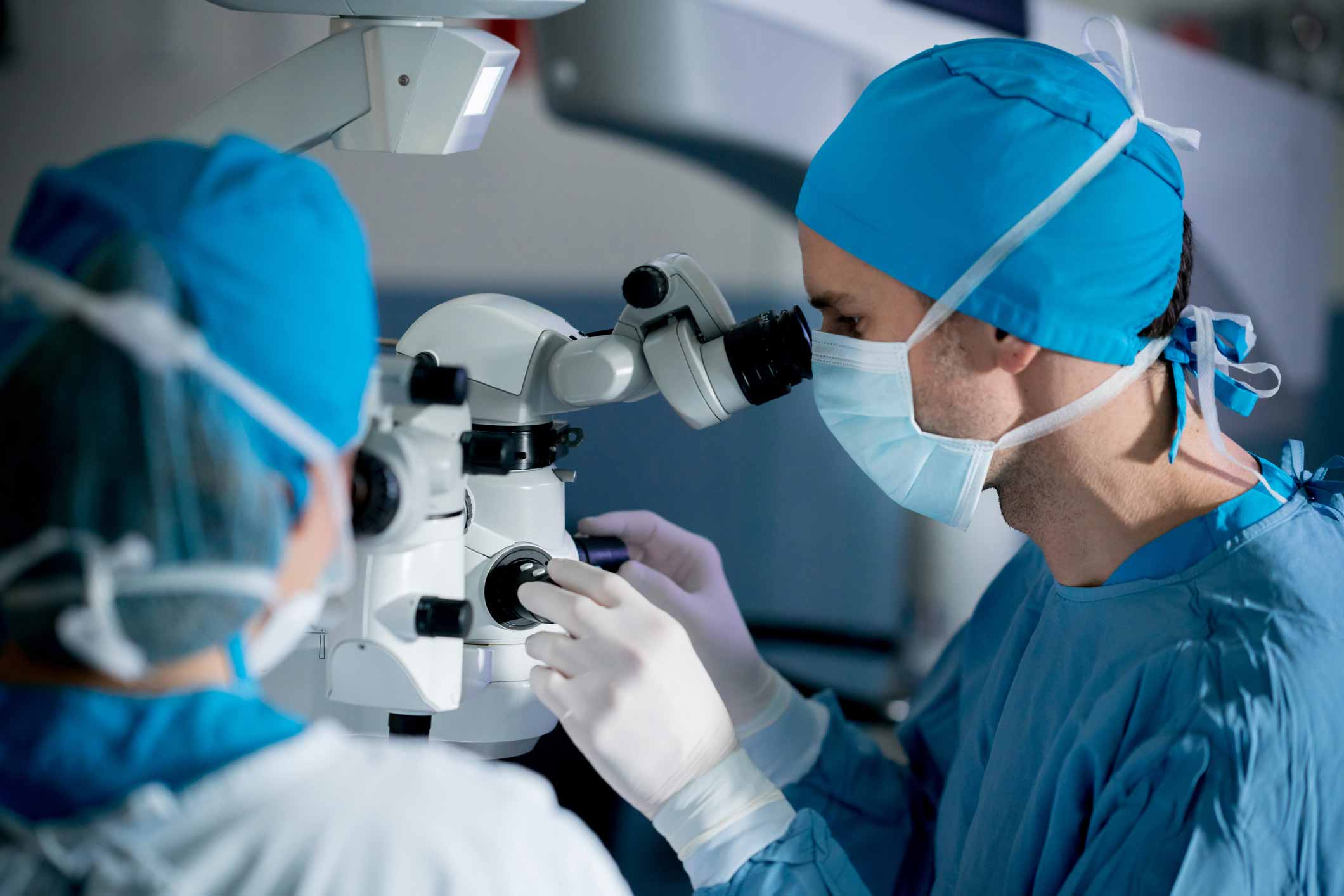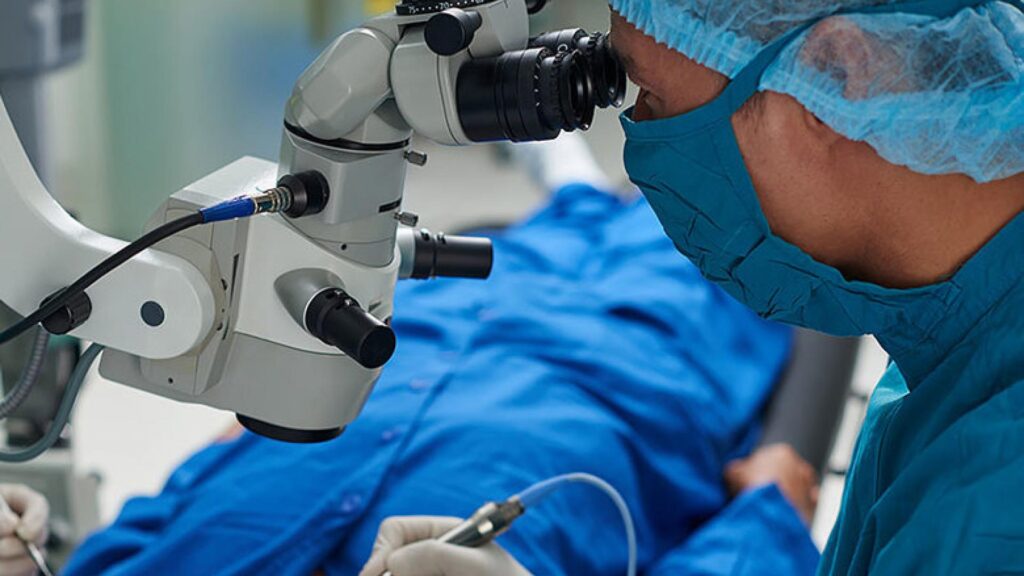Understanding Glaucoma Surgery: What You Need to Know

Glaucoma is a serious eye condition that affects millions of people worldwide. It is characterized by damage to the optic nerve, which can lead to vision loss and even blindness if left untreated. While there are various treatment options available for glaucoma, sometimes surgery becomes necessary to manage the condition effectively. In this article, we will explore the different aspects of glaucoma surgery and what you need to know before considering this option.
What is Glaucoma?
Before delving into glaucoma surgery, it is essential to understand what glaucoma is. Glaucoma is a group of eye diseases that damage the optic nerve, which is responsible for transmitting visual information from the eye to the brain. The most common type of glaucoma is called primary open-angle glaucoma, but there are other forms as well, such as angle-closure glaucoma and normal-tension glaucoma.
Before undergoing glaucoma surgery, it is essential to have a thorough pre-surgery consultation with your ophthalmologist. During this consultation, your ophthalmologist will assess your overall eye health, discuss your medical history, and perform various tests to determine the most appropriate surgical approach for your specific case.
Glaucoma is often referred to as the “silent thief of sight” because it can progress slowly and without symptoms until significant vision loss occurs. It is crucial for individuals, especially those at higher risk, to undergo regular eye examinations to detect glaucoma early and prevent irreversible damage to the optic nerve.
The Role of Eye Pressure in Glaucoma
One of the key factors in glaucoma is eye pressure. In a healthy eye, there is a delicate balance between the production and drainage of fluid within the eye. When this balance is disrupted, it can result in increased intraocular pressure, which can cause damage to the optic nerve over time. This damage is irreversible and can lead to vision loss.
Elevated eye pressure, also known as intraocular pressure, is a major risk factor for developing glaucoma. However, it is important to note that not all individuals with high eye pressure will develop the condition, and conversely, some may develop glaucoma with normal eye pressure. This highlights the complex nature of glaucoma and the need for comprehensive eye evaluations to assess various risk factors.

Different Types of Glaucoma
Glaucoma can be classified into different types based on the underlying cause and symptoms. Primary open-angle glaucoma is the most common type and typically develops slowly over time without noticeable symptoms until advanced stages. Angle-closure glaucoma, on the other hand, can cause sudden and severe symptoms like eye pain, blurred vision, and halos around lights. Normal-tension glaucoma refers to cases where optic nerve damage occurs even with normal intraocular pressure.
Other less common types of glaucoma include secondary glaucoma, which can result from other eye conditions or systemic diseases, and congenital glaucoma, which is present at birth. Understanding the specific type of glaucoma is crucial for determining the most appropriate treatment approach to preserve vision and prevent further damage to the optic nerve.
The Need for Glaucoma Surgery
While medication and other conservative treatments can help manage glaucoma and control intraocular pressure in many cases, there are situations where surgery becomes necessary.
Glaucoma is a complex eye disease that affects the optic nerve and can lead to vision loss if not properly managed. The optic nerve is responsible for transmitting visual information from the eye to the brain, and damage to this nerve can result in irreversible vision loss. Surgery may be recommended to prevent further damage and preserve vision in individuals with advanced glaucoma.
Progression of Glaucoma
Glaucoma is a progressive condition, meaning it can worsen over time if left untreated or if the existing treatment regimen is not effective in controlling the disease. Regular monitoring and assessment of the optic nerve and visual field are crucial in determining if the condition is progressing and if surgery should be considered.
As glaucoma advances, individuals may experience gradual peripheral vision loss, leading to tunnel vision and, eventually, complete blindness if left untreated. Surgery can help slow down or halt the progression of the disease by improving the drainage of fluid from the eye, thereby reducing intraocular pressure and preserving vision.
When Medication Isn’t Enough
In some cases, medication alone may not be sufficient to manage glaucoma effectively. This can occur if the intraocular pressure remains high despite using multiple eye drops or if there are intolerable side effects from the medications. Glaucoma surgery can offer a more long-term solution to control eye pressure and prevent further damage to the optic nerve.
Surgery for glaucoma may involve different techniques, such as trabeculectomy or minimally invasive glaucoma surgery (MIGS), depending on the severity of the condition and the individual’s overall eye health. These surgical procedures aim to improve the outflow of fluid from the eye or reduce the production of fluid to lower intraocular pressure and protect the optic nerve from damage. Find more about trabeculectomy on https://www.urmc.rochester.edu/encyclopedia/content.aspx?contenttypeid=135&contentid=380
Preparing for Glaucoma Surgery
One crucial aspect of preparing for glaucoma surgery is understanding the different types of procedures available. There are several surgical options for treating glaucoma, including trabeculectomy, minimally invasive glaucoma surgery (MIGS), and laser trabeculoplasty. Each procedure has its own set of benefits and risks, and your ophthalmologist will recommend the most suitable option based on your individual needs and the severity of your condition.
Understanding the Risks and Benefits
As with any surgical procedure, it is crucial to understand the risks and benefits associated with glaucoma surgery. Your ophthalmologist will discuss the potential complications and side effects of the surgery, as well as the expected outcomes and benefits. It is important to have realistic expectations regarding the results of the surgery and how it may improve your glaucoma management.
Furthermore, your ophthalmologist will explain the post-operative care required after glaucoma surgery. This may include using prescription eye drops, attending follow-up appointments, and avoiding strenuous activities that could increase eye pressure. By following your ophthalmologist’s instructions carefully, you can help ensure a successful recovery and optimal outcomes from the surgery.
Types of Glaucoma Surgery
There are different types of glaucoma surgery, each with its own unique approach and goals. The most common types include laser surgery and conventional surgery.
Glaucoma is a serious eye condition that can lead to vision loss if left untreated. Fortunately, there are several surgical options available to help manage and control the disease. In addition to laser surgery and conventional surgery, other types of glaucoma surgeries include minimally invasive glaucoma surgery (MIGS) and drainage implant surgery.
Laser Surgery for Glaucoma
Laser surgery for glaucoma involves using a high-energy laser to target and treat areas of the eye responsible for fluid drainage. This can help improve the outflow of fluid and reduce intraocular pressure. Examples of laser surgery for glaucoma include selective laser trabeculoplasty (SLT) and laser peripheral iridotomy (LPI).
Selective laser trabeculoplasty (SLT) is a non-invasive procedure that targets the trabecular meshwork, a drainage structure in the eye, to improve fluid outflow. Laser peripheral iridotomy (LPI) is often used to treat angle-closure glaucoma by creating a small hole in the iris to improve fluid drainage.
To read about laser eye surgery click here.
Conventional Surgery for Glaucoma
Conventional glaucoma surgery, also known as filtration surgery, involves creating a new drainage channel within the eye to allow excess fluid to bypass the blocked or damaged drainage network. The most common conventional surgery for glaucoma is called a trabeculectomy.
During a trabeculectomy, a small flap is created in the sclera (white part of the eye) to allow fluid to drain out of the eye and reduce intraocular pressure. This procedure is often recommended when other treatments have not been successful in controlling glaucoma. To learn more about pressure click here.
What to Expect During Glaucoma Surgery
During glaucoma surgery, the specific details will vary depending on the type of procedure being performed. However, there are certain common aspects that you can expect during the surgical process.
The Surgical Procedure
Glaucoma surgery is typically performed under local anesthesia, meaning you will be awake but will not feel any pain. Depending on the surgical approach, a small incision may be made on the surface of the eye, and specialized instruments will be used to perform the necessary steps of the surgery. Your surgeon will work carefully to achieve the intended goals of the procedure while minimizing risks and complications.
During the surgery, your surgeon will create a new drainage channel or improve the existing one to enhance the outflow of fluid from the eye. This can help reduce intraocular pressure and prevent further damage to the optic nerve. In some cases, a tiny tube or shunt may be implanted to facilitate the drainage process.
It is important to note that glaucoma surgery is a delicate procedure that requires precision and expertise. Your surgeon will take into account various factors, such as the severity of your glaucoma, the condition of your eye, and your overall health, to determine the most suitable surgical approach for you.

Post-Surgery Care and Recovery
After glaucoma surgery, it is essential to follow your surgeon’s instructions for post-operative care and recovery. This may include using eye drops or medications, wearing an eye patch or shield, and avoiding certain activities or environments that could hinder the healing process.
During the initial stages of recovery, you may experience mild discomfort, redness, or blurred vision. These symptoms are normal and should gradually improve over time. It is crucial to attend all scheduled follow-up visits with your ophthalmologist to monitor your progress and ensure optimal outcomes.
In some cases, additional treatments or adjustments may be required to achieve the desired results. Your surgeon will closely monitor your eye pressure and overall eye health to determine the effectiveness of the surgery and make any necessary modifications to your treatment plan.
Remember, each individual’s experience with glaucoma surgery may vary, and it is important to discuss any concerns or questions you may have with your ophthalmologist. They will provide you with personalized guidance and support throughout your journey to manage this sight-threatening condition.
